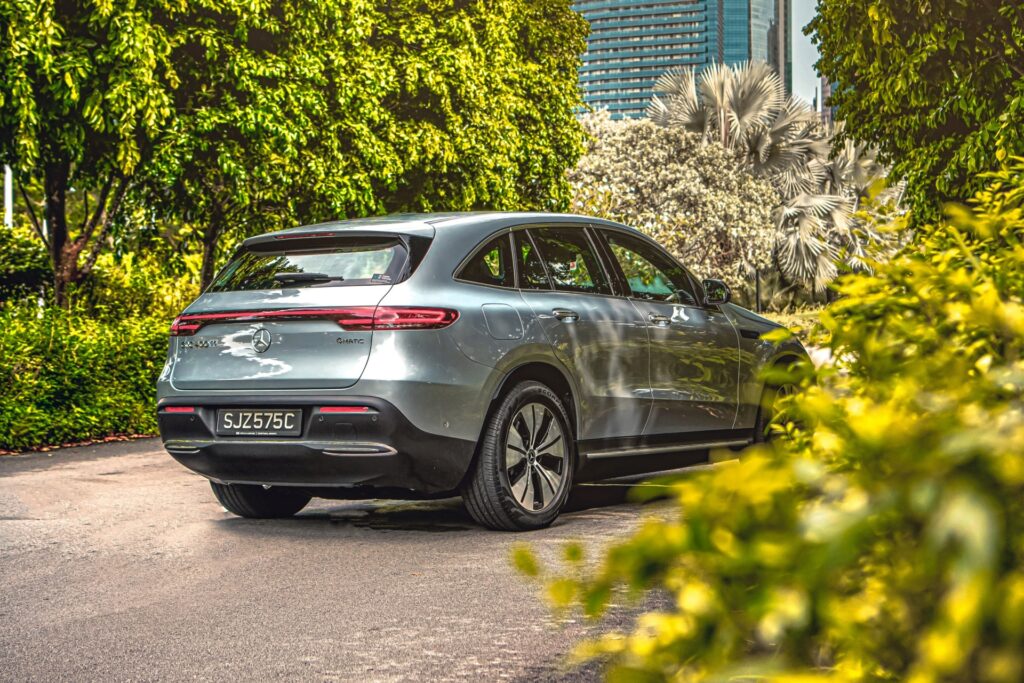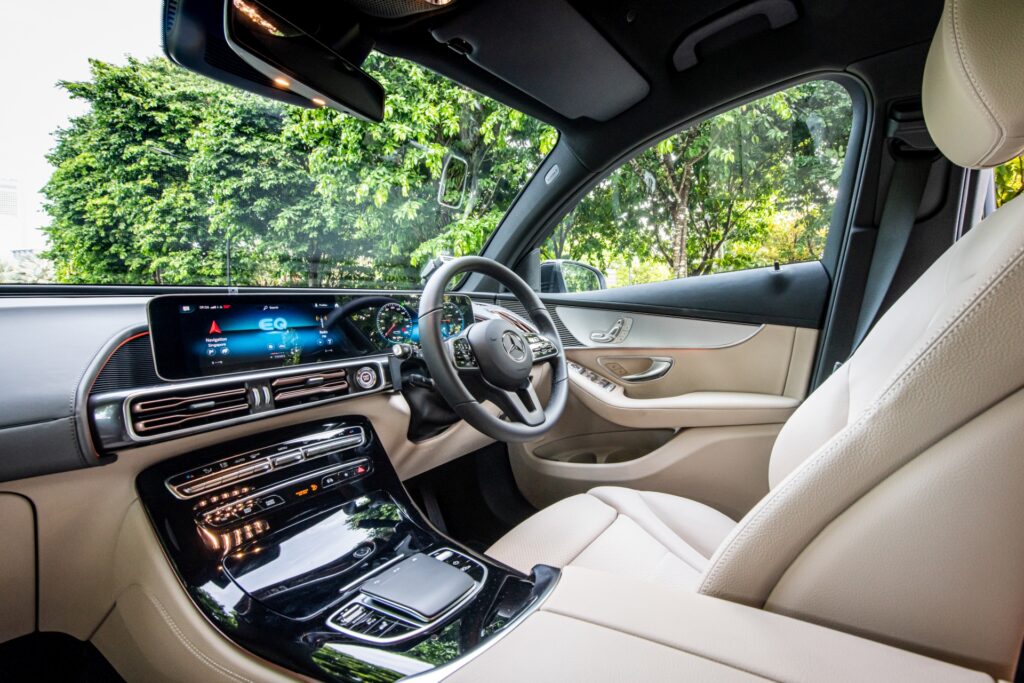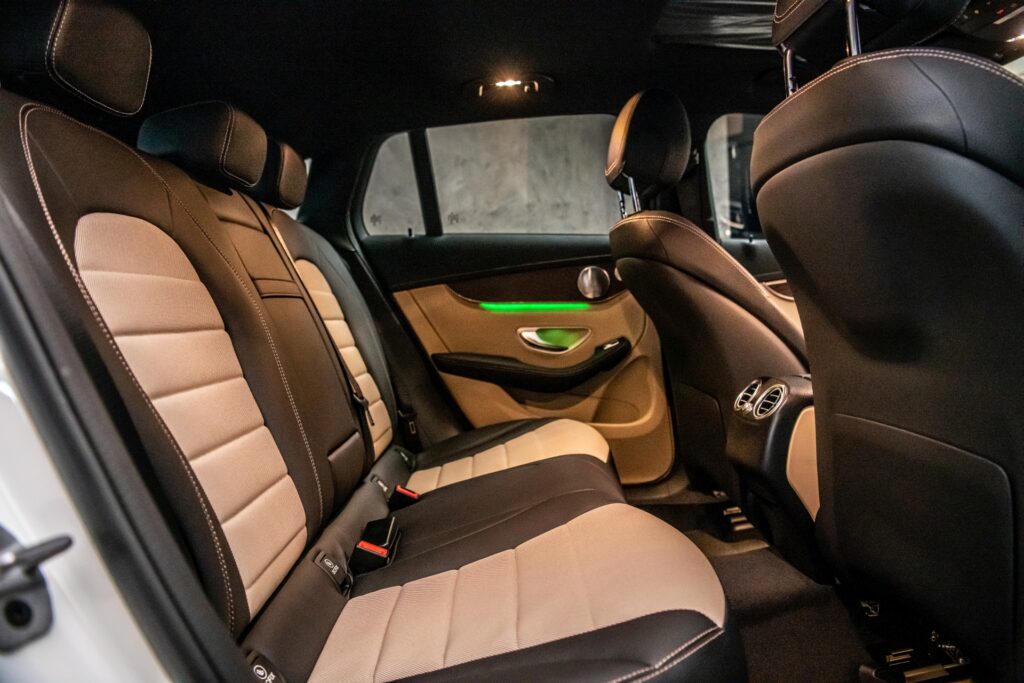The Mercedes-Benz EQC is the first in a steady wave of electrified models that the company will bring here over the next year. Prices start at S$305k, cheaper than its closest rivals from Audi and Jaguar.
Analysts have proclaimed that the electric vehicle (EV) revolution is the biggest shake-up of the car industry since… well, since the motor car was invented. Yet despite being the inventors of said motor car, Mercedes-Benz has been a bit slow off the mark in joining that revolution. But no matter; that time has come, with the launch of the electric Mercedes-Benz EQC SUV in Singapore.

Notably, despite being beaten to the luxury EV market by Jaguar, Audi and Porsche, with the I-Pace, e-tron and Taycan respectively, Mercedes should be able to hit the ground running in terms of sales, thanks to one crucial aspect: price.
In Singapore, two variants of the EQC will be available at launch, both with the same battery and motor. S$304,888 (including COE) is the minimum you’ll need to get keys in hand, with the EQC 400 in Electric Art trim. That’s between S$30k-80k cheaper than the base cost of its aforementioned competitors.

Stump up another S$18k, and you could upgrade to the AMG Line package (below), which, like all other Mercedes-Benz models, nets you a sportier-looking front grille and bumpers, different wheel designs and interior trimmings, as well as an upgraded audio system.

Outputs for the Mercedes-Benz EQC 400 are 408hp and a monster 760Nm of torque, which is significantly more than the Audi e-tron and just shades the Jaguar I-Pace. Consequently, it’ll do 0-100km/h in 5.1 seconds, and top out at 180km/h.
Its two motors (one at each axle) are fed by an 80kWh battery, giving it up to 420km of range. Varying levels of brake regeneration (i.e. using the motors’ resistance to slow the car and top up the battery) are available, with the strongest able to slow the car to a standstill, effectively allowing for a one-pedal drive mode that some other EVs offer.

The car itself has the capability to fast-charge from 10% to 80% in 40 minutes using a 110kW charger; however currently Singapore’s most powerful chargers are only rated at 50kW, which would take about 1.5 hours to charge up the same amount.
Mercedes buyers — particularly in Singapore — are nothing if not conservative, so it’s just as well that the EQC doesn’t rock the boat when it comes to familiarity and user-friendliness. The car as a whole is based on the GLC crossover (just with modifications to the front and rear subframes and floor for the motors and batteries), and the interior will be familiar to anyone who’s been in a Mercedes in the last five years.

Just about the biggest difference drivers might notice would probably be the serenity inside the car. According to Peter Kolb, Senior Manager Overall Vehicle Testing EQC, Mercedes doubled down on the refinement EVs are supposed to offer, and so worked hard on insulating the motors from the cabin. This is also why you won’t hear a synthesised tune played through the speakers when you’re accelerating in the EQC – total silence is the name of the game.

The arrival of the EQC marks the start of a local product offensive from the Mercedes-EQ sub-brand over the coming year. In an online Q&A session, Claudius Steinhoff, President and CEO of Mercedes-Benz Singapore said, “Our target is to as quickly as possible roll out models that reach from the entry segment to the luxury segment, therefore we are happy to be getting the EQA in Q3 of 2021, followed by the EQS which will come at the beginning of 2022.
“We will continue with the same speed also throughout 2022; the EQB has already been presented, and there are more models down the line which will also come to SG as quickly as possible, because we want to make use of this momentum that was started by the EQC, and then all of this will be supported by plug-in hybrid models as well.”
Enjoyed this article? Read more about the latest EVs here.








